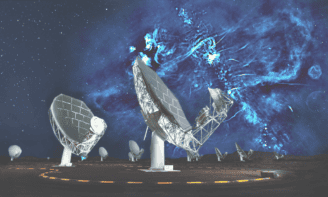
The Chinese spacecraft Chang’e-4 has landed on the far side of the Moon and has begun relaying data and images back to Earth. It is the first mission to operate on the far side, which is the hemisphere of the Moon that always faces away from Earth. This half of the Moon has a much more rugged and varied landscape than the hemisphere that is visible from Earth and studying its geology could provide important information about how the Moon and the rest of the solar system formed.
There is no direct line of sight from Earth to the landing sight and so all communications between the China National Space Administration’s Beijing Aerospace Control Center and Chang’e-4 are relayed via a satellite called Queqiao.
The lander contains several scientific instruments and a sealed “biosphere” containing plant seeds and insect eggs that scientists hope will hatch. The probe also has a rover that will explore the lunar surface.
Largest, deepest and oldest
Chang’e 4 landed in the Moon’s South Pole-Aitken Basin, which is a huge impact crater that is about 2500 km across and about 13 km deep. It is the largest, deepest and oldest basin on the Moon. Scientists already know that rocks in the basin floor have a different chemical composition than those in the surrounding highlands. One possible explanation is that some of this material was liberated from the Moon’s mantle when the crater was formed. Using the probe’s instruments to study these rocks could provide important insights into the interior composition of the Moon – and ultimately its origin.
The mission will also monitor low-frequency radio signals from space to establish whether the far side of the Moon is a good place to do radio astronomy. Astronomers believe it should be an ideal location for radio telescopes because the instruments would be shielded from radio signals originating from Earth.
Sharing its name with a lunar goddess of Chinese mythology, the Chang’e missions to the Moon began in 2007 with the launch of the Chang’e-1 orbiter. Chang’e-4 was originally designed as a backup for the Chang’e-3, which landed successfully on the nearside of the Moon in 2013. Chang’e-4 was then re-purposed and was launched on 7 December 2018. The communications relay satellite Queqiao was launched in May 2018.



